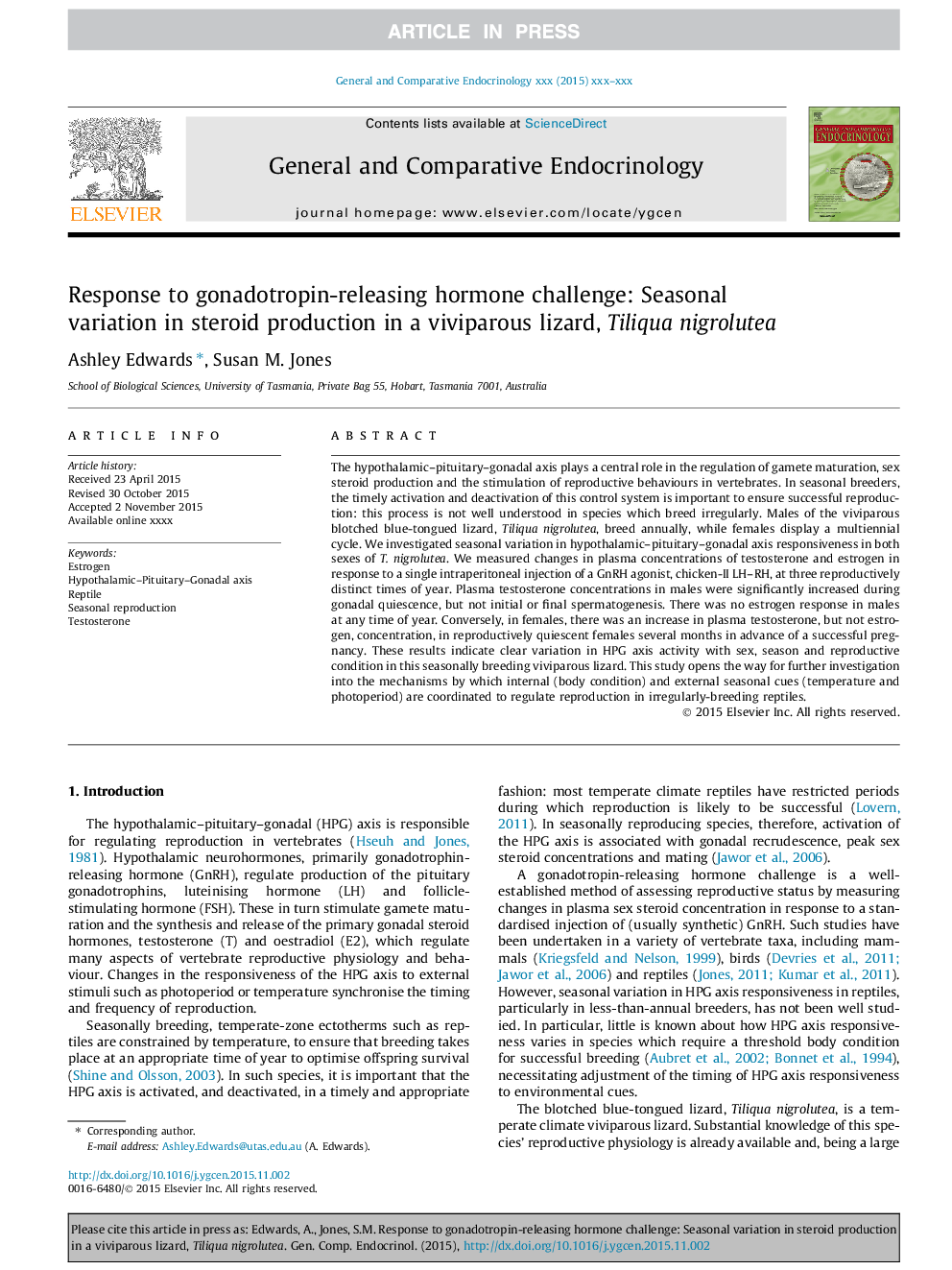| Article ID | Journal | Published Year | Pages | File Type |
|---|---|---|---|---|
| 5587811 | General and Comparative Endocrinology | 2017 | 7 Pages |
Abstract
The hypothalamic-pituitary-gonadal axis plays a central role in the regulation of gamete maturation, sex steroid production and the stimulation of reproductive behaviours in vertebrates. In seasonal breeders, the timely activation and deactivation of this control system is important to ensure successful reproduction: this process is not well understood in species which breed irregularly. Males of the viviparous blotched blue-tongued lizard, Tiliqua nigrolutea, breed annually, while females display a multiennial cycle. We investigated seasonal variation in hypothalamic-pituitary-gonadal axis responsiveness in both sexes of T. nigrolutea. We measured changes in plasma concentrations of testosterone and estrogen in response to a single intraperitoneal injection of a GnRH agonist, chicken-II LH-RH, at three reproductively distinct times of year. Plasma testosterone concentrations in males were significantly increased during gonadal quiescence, but not initial or final spermatogenesis. There was no estrogen response in males at any time of year. Conversely, in females, there was an increase in plasma testosterone, but not estrogen, concentration, in reproductively quiescent females several months in advance of a successful pregnancy. These results indicate clear variation in HPG axis activity with sex, season and reproductive condition in this seasonally breeding viviparous lizard. This study opens the way for further investigation into the mechanisms by which internal (body condition) and external seasonal cues (temperature and photoperiod) are coordinated to regulate reproduction in irregularly-breeding reptiles.
Related Topics
Life Sciences
Biochemistry, Genetics and Molecular Biology
Endocrinology
Authors
Ashley Edwards, Susan M. Jones,
